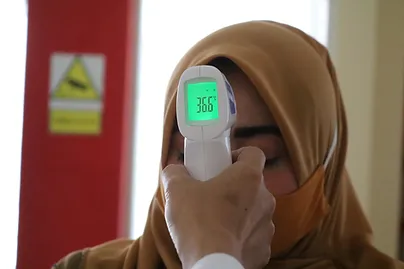No products in the cart.
Reasons for Having Fever After Hijama/Wet Cupping Therapy.
Some of my clients complained of having a fever after Hijama. Let’s discuss why it happens.
Hijama cupping therapy is a traditional alternative medical treatment practiced in ancient Egyptians, Chinese culture, Arabic medicine, Greek medicine, and Prophetic medicine. Cupping alleviates pain by increasing blood circulation and eliminating toxins from the body. Cupping also helps to reduce inflammation and increases blood flow, which provides relaxation and well-being to the body.
Hijama cupping therapy has been a safe and secure method to handle issues with soft tissues and stiff muscles for centuries. When cups are applied on the targetted area of the skin, it creates negative pressure. The negative pressure helps to reduce the tension and stiffness in the muscles and also aids in releasing the myofascial and scar tissues.
Hijama cupping therapy is a safe and secure therapy. Generally, it does not cause any severe side effects. However, some symptoms may occur for some people. Hijama doesn’t create any life-threatening side effects. The symptoms or side effects of Hijama cupping therapy vary from person to person. It depends upon the individual’s overall health, lifestyle, food choices, and what kind of skin type or blood type a person has.
During winter, I get many complaints from my clients that after cupping sessions, they get fever.
Fever is a rare symptom after Hijama a few clients have experienced it. There are several precautions a person should take to spare them from fever.
Keep Yourself Warm After Hijama

Hijama activates the immune system cells and increases the body’s temperature for a few hours. It is highly recommended that the client be advised to keep themselves warm for at least 24 hours. The body becomes weak after Hijama, which involves cutting the skin through incisions so that cold air can enter your body through those incisions and could cause a fever. It is necessary to cover yourself after the Hijama session because the pores of the skin open after the incisions. Covering your body is essential to keep yourself warm. Cold can enter your body through open pores. With fever, clients commonly report side effects like headaches, muscle aches, chills, and fatigue for at least 2 to 3 days.
Take Rest After Hijama

During Hijama cupping therapy, the negative pressure enhances blood circulation, disrupts the connective tissues, and loosens the tensed muscles. The suction helps to drag the stagnated blood and toxins out of the deepest tissues of our body. Most of the time, clients feel instant energy after the session. Still, if the body is dehydrated, the client hasn’t eaten enough, or too much stagnated blood comes off, or maybe the body has a sensitive constitution, it results in fatigue and tiredness. When the body feels exhausted, it may cause a fever.
It is necessary to rest after Hijama, at least over the next 24 hours. Some individuals feel instant energy after the session, but most feel tired, exhausted and sleepy. Some people experience flu-like symptoms some feel headaches, body aches, fatigue or dizziness. These symptoms are temporary reactions by an individual’s immune system to the cellular waste that the suction of the cupping therapy encourages to release. These kinds of symptoms are natural. Practitioners specifically advise clients to take some rest because, after the session, there is so much going on inside the body, which is exhausting and may cause fever, so taking rest makes the process easy for an individual.
Sleep Well After Hijama

Sleep allows the mind and the body to rejuvenate, slow down and turn on the recovery process. Lack of sleep disrupts the brain’s function, while a healthy amount of sleep energizes blood cells and enhances the brain’s ability to function. Lack of sleep exposes the body to illness and causes the body’s stress hormones to expand.
After Hijama cupping the body needs rest and a sound sleep. A body automatically gets warm after Hijama, and sleep helps the body to regulate internal body temperature. Sleep deprivation may cause an increase in skin temperature. That is why you can get a fever if you do not get a good night’s sleep.
These are very trivial, and minor precautions in taking care of them may protect your body from having a fever after Hijama cupping therapy.
Hijama cupping therapy is Sunna-e-Rasool and has enormous benefits. Complete the sunnah, drag the toxic blood out of your body and let your body heal itself.





Leave a Reply